Politics
/
Books & the Arts
/
July 14, 2025
Our art critic visits the Smithsonian American Art Museum to get a closer look at the Trump administration’s attack on DC arts institutions.
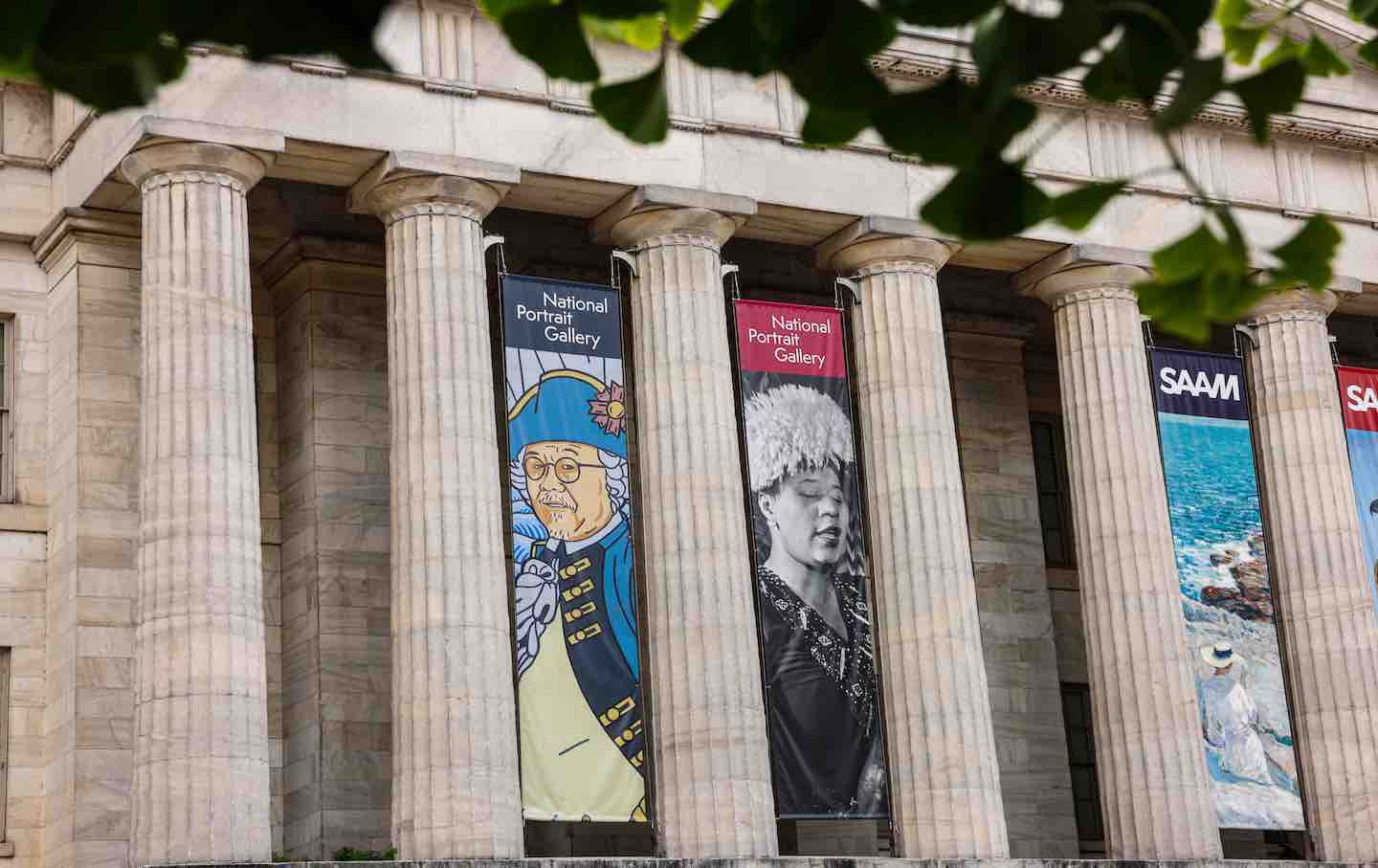
The exterior of the Smithsonian American Art Museum and National Portrait Gallery in Washington, DC, 2025.
(Valerie Plesch / For The Washington Post via Getty Images)
It’s funny how you can see things over and over without really seeing them. How many times have I visited the National Gallery of Art over the years? Plenty, but it never struck me until recently that it has a direct and uninterrupted sightline across the National Mall to the Capitol. Maybe spending too much time with art has got me into a habit of finding allegories everywhere, but I suddenly sensed that the two buildings, and the two distinct powers they represent—art and politics—were inexorably at odds. I was in Washington to visit the opening of an exhibition at the Hirshhorn Museum and Sculpture Garden by the painter and video artist Adam Pendleton, for which I had written a catalog essay. But I also had a secret mission: to see if I could get a closer look at the damage being done to the museums in our nation’s capital. I’d already tried to get some DC-based curators I know to speak with me—off the record, of course—and came up empty: Their lips were sealed. That unwillingness to respond worried me even more than any direct expression of unease would have done. These people, I thought, must be terrified.
As it turns out, I’m not much of an investigative reporter: My conversations in Washington didn’t turn up anything very revealing. But by the time I got there, the White House had issued its March 27 executive order targeting the Smithsonian Institution (of which the Hirshhorn, though not the National Gallery, is a part). The title of the order—“Restoring Truth and Sanity to American History”—might have been scary enough to frighten even the steeliest of art professionals. Having attacked universities and law firms and decimated the federal bureaucracy itself, not to mention getting himself elected chairman of the Kennedy Center for the Performing Arts, Trump had decided that the next target in his culture war was to be the museum world. The imperative: to “prohibit expenditure on exhibits or programs that degrade shared American values, divide Americans based on race, or promote programs or ideologies inconsistent with Federal law and policy.” (The Nazis, naturally, had a word for this: Gleichschaltung.) Departing his post as director of the Smithsonian’s National Museum of African American History and Culture just before the executive order was issued, the poet Kevin Young seems to have been shrewd enough to get out while the going was good.
Since then, Kim Sajet, the director of the National Portrait Gallery, another Smithsonian branch, has resigned after intense pressure from the president, who denounced her as “a highly partisan person, and a strong supporter of DEI.” Worse still, the Smithsonian’s secretary, Lonnie G. Bunch III, appears to be at least verbally buckling to the administration’s demands in sheepishly allowing that “some of our work has not aligned with our institutional values of scholarship, even-handedness and nonpartisanship. For that, we must all work to do better.” That sounds a lot like a euphemism for “let’s keep our heads down.”
But while Trump’s executive order singled out the National Museum of African American History and Culture as well as the American Women’s History Museum (which is still in the planning stage) for censure, it was the Smithsonian American Art Museum that was the biggest immediate target of the executive order, thanks to an exhibition titled “The Shape of Power: Stories of Race and American Sculpture,” which was condemned for “representing that ‘Societies including the United States have used race to establish and maintain systems of power, privilege, and disenfranchisement’” (surprise, surprise!) and “that ‘sculpture has been a powerful tool in promoting scientific racism.’” Even worse, the order continued, the show “promotes the view that race is not a biological reality but a social construct, stating ‘Race is a human invention’”—a statement, I’d have thought, about as controversial as denying that the earth is flat. Apparently, any dissent from a now-antiquated idea of racial essentialism is to be considered subversive and un-American. Presumably, the insistence on biology is meant to echo the administration’s insistence (in a different executive order) that gender is to be considered biologically determined.
Until the March 27 executive order was issued, I hadn’t thought of making a visit to the American Art Museum a priority during my brief stay in Washington. But the prospect of enjoying anything that had irked this administration was too enticing to pass up. Still, would I enjoy it? I wasn’t entirely sure. Sculpture is, you might say, an extroverted art, and even more than most other art forms, it lends itself to ideological use. The exhibition catalog cites the early-20th-century African American civil rights activist and intellectual Freeman Henry Morris Murray, who in 1916 wrote about depictions of Black Americans in sculpture: “Sculpture more frequently than painting serves higher purposes than that of mere ornament…. Its main purpose is to ‘say something.’”
All too often, in truth, what sculpture does is pontificate. So while I am ready to believe that it has often been a vehicle for racial ideology, I had my reservations about an exhibition taking this to be an eye-opening revelation. It’s no wonder that “The Shape of Power” sometimes stumbles in making its point about statuary and ideology. Among the works included are plenty of examples of academic statuary from the 19th and early 20th centuries; some were explicitly intended to promote white supremacy, while others were meant to convey ideas that could have been seen at the time as progressive and liberal, but which today can look embarrassingly paternalistic in their assumptions of white saviorism. The implicit lesson that righteous intentions don’t define artistic value is a hard one to learn.
Current Issue
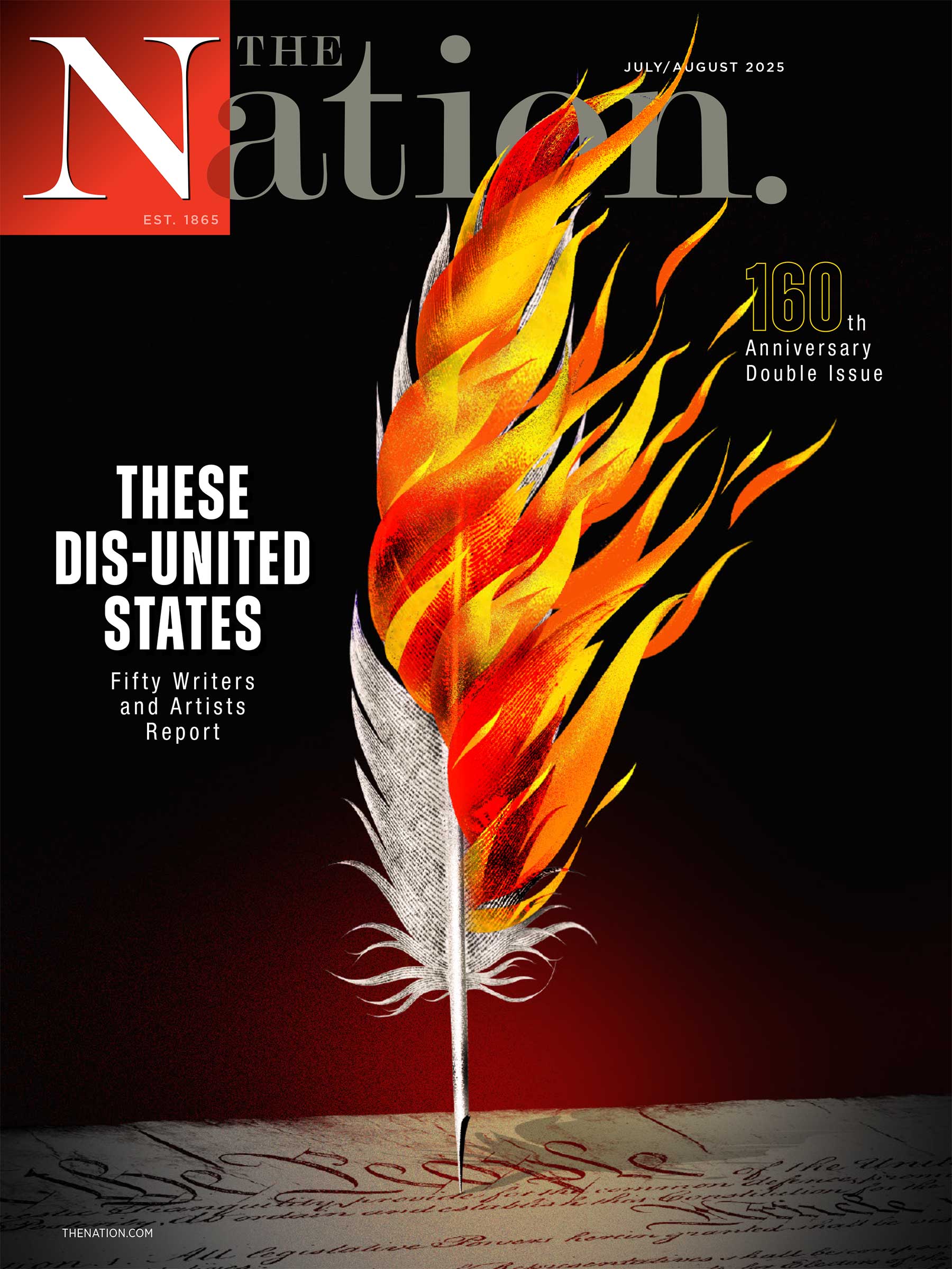
These historical pieces amount to about half the show; the other half consists of more recent work, mainly by Black, Native, Latino, and Asian artists. The idea is that, while much of American sculpture served to “give physical form to racist ideas, shaping how generations have learned to visualize and think about race,” as the exhibition curators Karen Lemmey, Tobias Wofford, and Grace Yasumura write in the catalog, contemporary artists “use the medium to challenge the enduring social and cultural constructions of race and racialized power while offering new visions of community, identity, and selfhood.”
In other words, “The Shape of Power,” which (barring any further interventions from the administration) will be on view through September 14, implicitly presents an interpretation of history that bends toward justice and progress, away from a benighted past to an enlightened present, and portends at least the “possibility of an emancipatory future.” Those words had to have been written before Election Day 2024—the exhibition opened three days later, on November 8.
One of the most renowned works by an American artist of the 19th century was The Greek Slave (circa the 1840s) by Hiram Powers. (The version on view is one of the marble replicas fabricated for Powers by artisans in the early 1870s; the museum also owns the original plaster.) This bland rehash of a classical nude, clad only in the handcuff-like chain that binds her wrists, seems to look down on the world from an Olympian distance from which no misfortune could detach her; she is a late descendent of the Capitoline Venus, a Hellenistic variant of a work by Praxiteles, which was found in Rome in the 1670s. She is supposed to evoke a Greek woman of the time, enslaved by the Ottoman Turks during the Greek War of Independence (1821–29). One might think the idealized nude a mismatch with the ostensible subject, but for art lovers of the time, there was nothing salacious about this dainty naked body; it was, they found, “clothed all over with sentiment, sheltered, protected by it from every profane eye.”
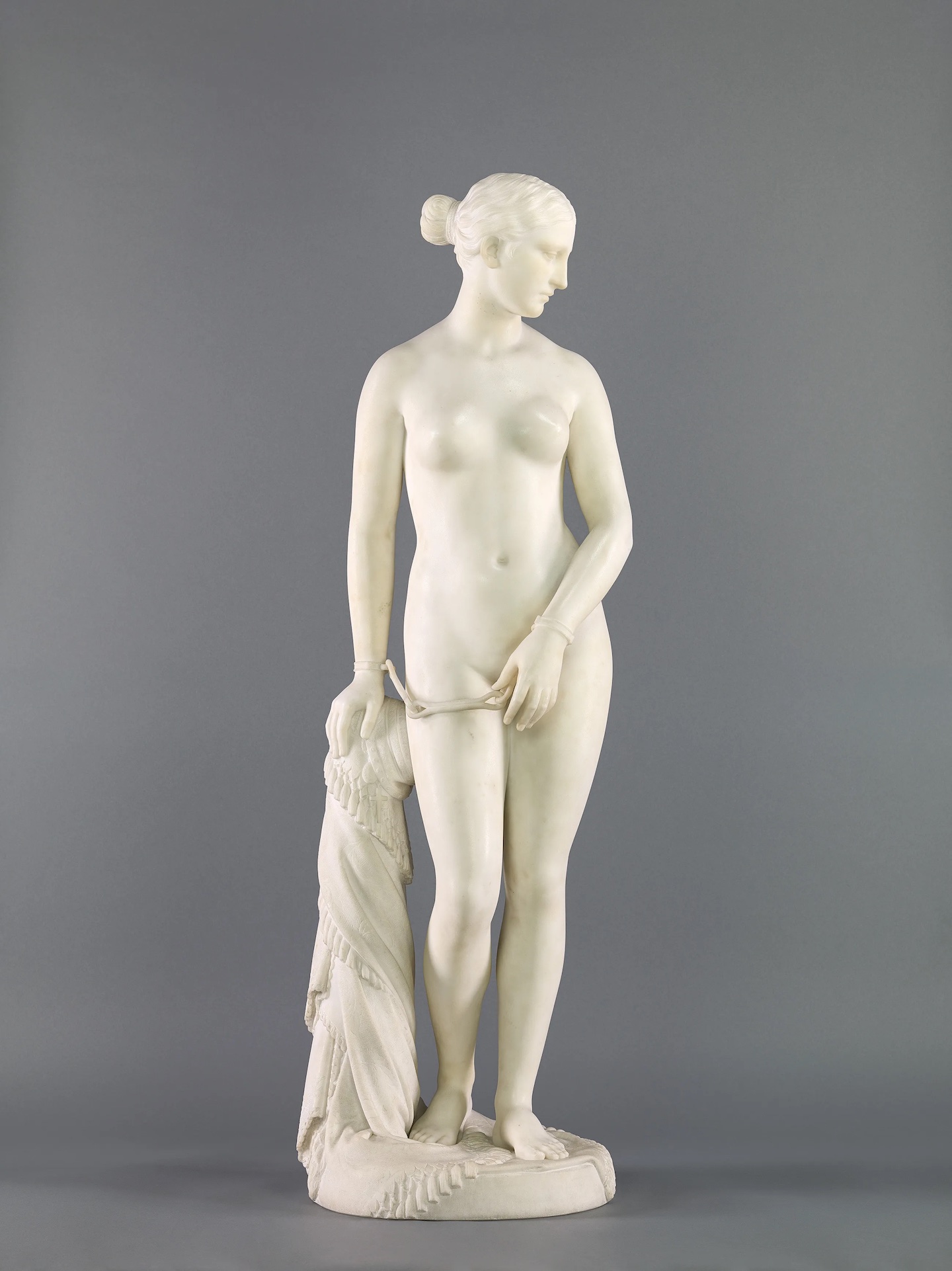
This sleek Aphrodite hardly resembles an ordinary woman caught up in the horrors of war—consider, by contrast, the forlorn victims pictured by Eugène Delacroix in his vast canvas depicting another scene from the Greek war, The Massacre at Chios (1824). How much less does she resemble those people who were actually bought and sold in the United States at the time? Still, this genteel sculpture became an icon for the movement against American slavery: “The white subject of The Greek Slave pulled on abolitionist heartstrings,” the curators write, “garnering displaced sympathy for enslaved African Americans.” Frederick Douglass himself owned a small copy. Quoting one scholar, the curators suggest that “the sweeping sentimentalism and the paternalistic moral concern with which she was greeted” at the time “disavowed the immediacy and horrors of American and transatlantic slavery and the specific oppression of black female slaves.” Today, the way this work avoids looking straight at the horror it so remotely evokes can be queasy-making. But as the curators show, the development of that sensibility required enormous changes in the social order.
For Elizabeth Barrett Browning, who wrote a sonnet inspired by the statue after it was shown at the Great Exhibition in London in 1851, it was a mistake to “say ideal beauty cannot enter / The house of anguish.” For Browning, it was precisely the “passionless perfection” that repels me in this work that serves to “confront man’s crimes… / With man’s ideal sense” and proclaim an all-encompassing (rather than a locally specific) abolitionism, a cry to “Pierce to the centre, / Art’s fiery finger! and break up ere long / The serfdom of this world.” The curators aren’t prescriptive in how they present The Greek Slave and are careful to situate it historically, but when Lemmey writes of the “displaced sympathy” it aroused, one detects the tacit disapproval of a sympathy that was too indirect. I wonder if Browning’s lines might be a useful way to think through the exhibition’s stated goals about the politics of sculpture. I suspect that, in the end, I will never overcome my distaste for Powers’s statue, but from a moral and political standpoint, I would hesitate to be sure I can see more deeply than Frederick Douglass into the rights and wrongs of how slavery should be represented.
The allegorical machinery that burdened so much of our 19th- and early-20th-century sculpture would fade away with modernism. Abastenia St. Léger Eberle’s Girl Skating (1906) seems to embody the joy of leaving all that nonsense behind: a kid stretching out her arms with the exhilaration of sheer motion. An unexpected sculptural equivalent to the quasi-journalistic attentiveness to contemporary urban life in the paintings of Eberle’s “Ashcan School” contemporaries, such as John Sloan and George Bellows, Girl Skating depicts one of the immigrant children that Eberle saw in the neighborhood around her Lower East Side studio—Russian Jews, Greeks, Italians, Poles, Irish. “The life of all these races overflows into the streets,” Eberle wrote, introducing an exhibition of her work, and that “life is always visibly interesting.” Her small bronze sculpture, like the 19th-century statues, is also subject to changing perceptions—her evocation of race differs from how it is characterized in the catalog, as an “enlargement of American whiteness,” a phrase borrowed from the historian and artist Nell Irvin Painter. Eberle’s use of “race” as a synonym for what we now more broadly call “ethnicities” is a reminder that the word was once not primarily applied to skin color but could also include one’s country of origin.
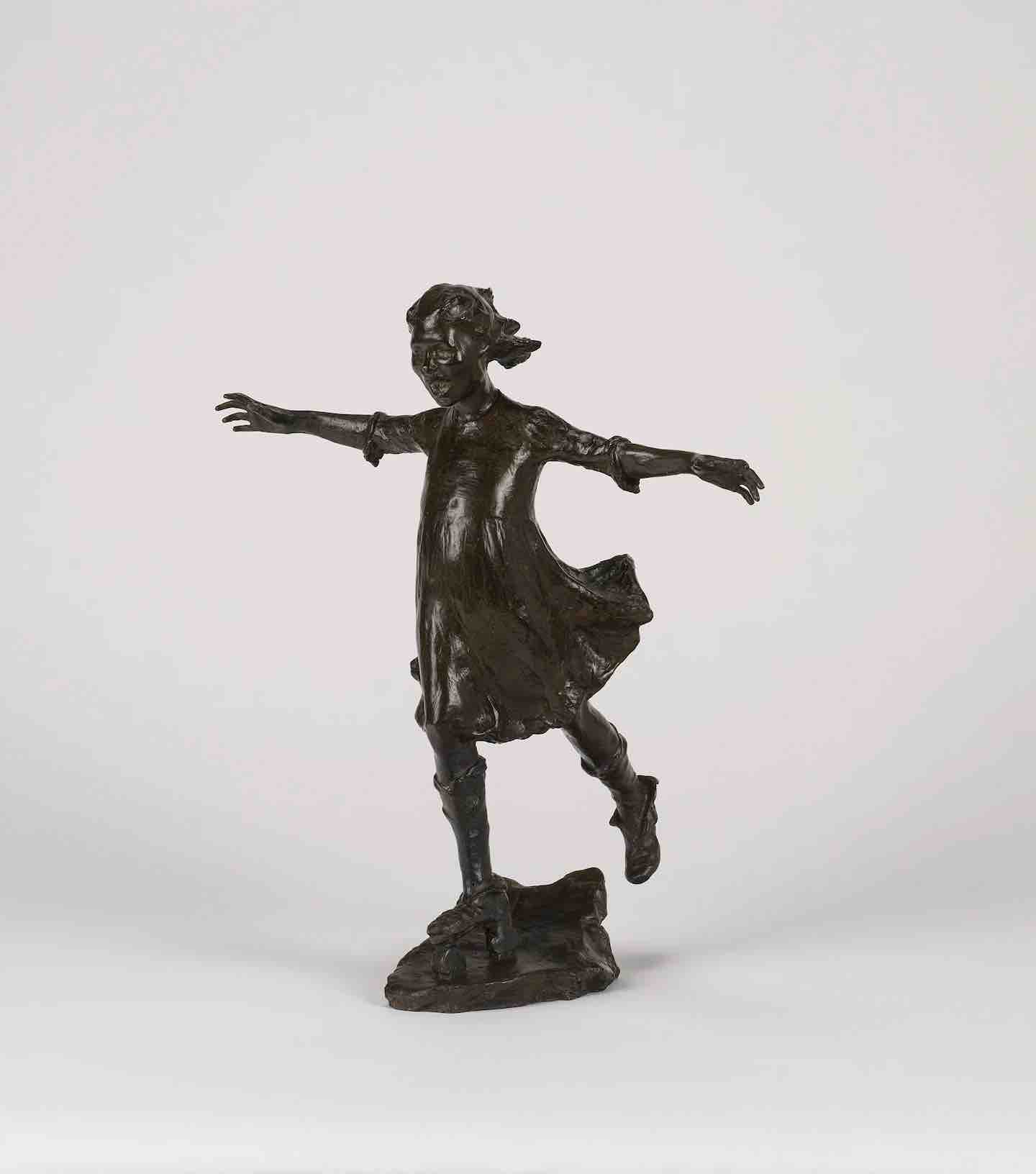
Modernist sculpture, as opposed to the earlier neoclassicism and the more recent art we call contemporary—work made, let’s say, from the 1920s through the 1970s—is sparsely represented in this show, but a few pieces stand out. Isamu Noguchi’s fiberglass and plexiglass wall relief My Arizona (1943) is unusual in this context as an abstraction that evokes landscape rather than the human figure (though the rounded bulge at the lower left, with a red hook emerging from it, might be a fleshy, quasi-Surrealist image of a comforting breast morphing into something more threatening). As the work’s title suggests, it refers to Noguchi’s period of voluntary internment at a camp in Poston, Arizona—an act of solidarity with his fellow Japanese Americans who had been incarcerated after the United States went to war with Japan. For Noguchi’s biographer, Hayden Herrera, My Arizona embodies “the pointlessness and loneliness that Noguchi endured at Poston,” where he was dismayed to find that he did not fit in with his fellow internees, who even suspected him of being an informer. The legacy of Executive Order 9066, which ordained the removal of people of Japanese descent from the West Coast for reasons of national security, continues to haunt us: It was based on the same 1798 law that is currently being cited to authorize the extrajudicial deportation of Venezuelans.
A remarkable figurative work from this period is Skywatcher (circa 1948) by Marion Perkins, an artist I hadn’t known of before. It’s a seated figure with its head turned impossibly to look up above its back, carved from a very narrow piece of gray marble, so that it looks almost like a silhouette rather than full-bodied. It speaks with quiet eloquence of a fear of what might come from the sky: Perkins conceived it as part of an unrealized memorial to the bombing of Hiroshima, which he saw as a racially motivated crime, counting himself (in an article published in the Marxist journal Masses & Mainstream) as one of the many African Americans who’d “noted that the atom bomb was used only against Asians, not against Hitler.”
The emotional charge of My Arizona is oblique, that of Skywatcher less so, but it’s equally impactful in both cases. I wish I could say the same for more of the contemporary works on view. Still, several linger in the memory: Barbara Chase-Riboud’s Zanzibar/Black (1974–75), Alison Saar’s Mirror, Mirror (Mulatta Seeking Inner Negress) (2006), Huma Bhabha’s The Orientalist (2007), Fred Wilson’s I Saw Othello’s Visage in His Mind (2013), Simone Leigh’s Village Series (2020), and Sanford Biggers’s Lady Interbellum (2020) among them. Yasamura identifies Bhabha’s art, in particular, as working to “resist the regimes of intelligibility and representation that have emerged out of the United States’ imperial entanglements with Asia.”
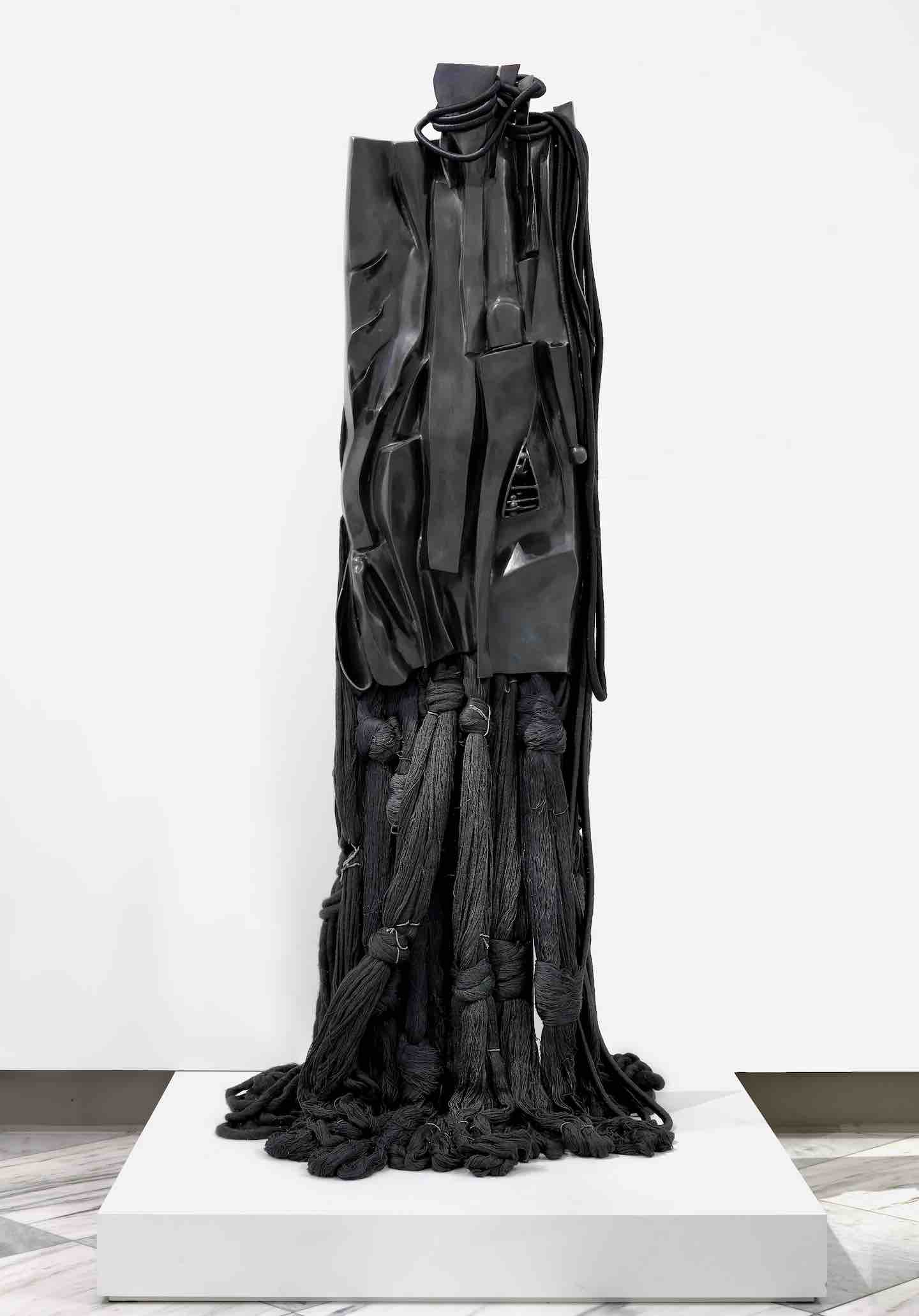
I would add that all of these works I’ve just named, to one degree or another, draw their visual and affective power from their resistance to representation (which is hardly to say that most of them are abstract)—a resistance, one might argue, to the impulse to predetermine what the viewer should think or what lesson they can draw. But far more numerous here are the contemporary works of more allegorical intent. In fact, although their appearance is hardly neoclassical, they work with the same kind of logic that operates in The Greek Slave: Their meaning is to be read from the symbols they contain rather than experienced. Take, for instance, Titus Kaphar’s Monumental Inversions: George Washington (2017). Kaphar’s work refers to the equestrian statue of George Washington that stands in New York’s Union Square, turning it into a bunch of scattered glass forms like puzzle pieces that have fallen or seem about to fall from a charred concavity in a wooden plane. Materially impressive, the piece conveys its message through an “inversion,” as the work’s subtitle rightly has it, of the mythical Washington’s strength and uprightness, turning these qualities into forms of fragility and fall.
Whether one prefers the more allegorical mode that some postmodern art shares with 19th-century neoclassicism, or the resistance to representation that emerges from modernism, the Smithsonian American Art Museum is to be thanked for having made this first attempt at an exhibition on a topic of great importance. The attempt to suppress it flatly contradicts the administration’s proclaimed goal of “Restoring Truth and Sanity to American History” and shows its preference for duplicity and ignorance. If anything, I could have wished for the show to be bigger and more encompassing—as encompassing as the problem of race is in this country. It’s easy to think of works that should have been here and aren’t: David Hammons, for instance, is discussed in the catalog, though his work is not on view. Having visited the National Gallery the same day I saw “The Shape of Power,” I had to wonder why Elizabeth Catlett, whose retrospective (previously seen at the Brooklyn Museum) is on view there through July 6, wasn’t included. And the same goes for Chakaia Booker, who has a marvelous showing of three large-scale wall sculptures at the National Gallery through August 3. But it’s not only artists of color who are missing from the modern and contemporary offerings at the SAAM. I thought, for instance, of Charles Ray’s larger-than-life-size, stainless-steel work Huck and Jim (2014) at the Art Institute of Chicago—another reinterpretation of 19th-century sculptural forms (as well as Mark Twain’s famous duo) that seeks to undermine their regimes of intelligibility.
More from The Nation
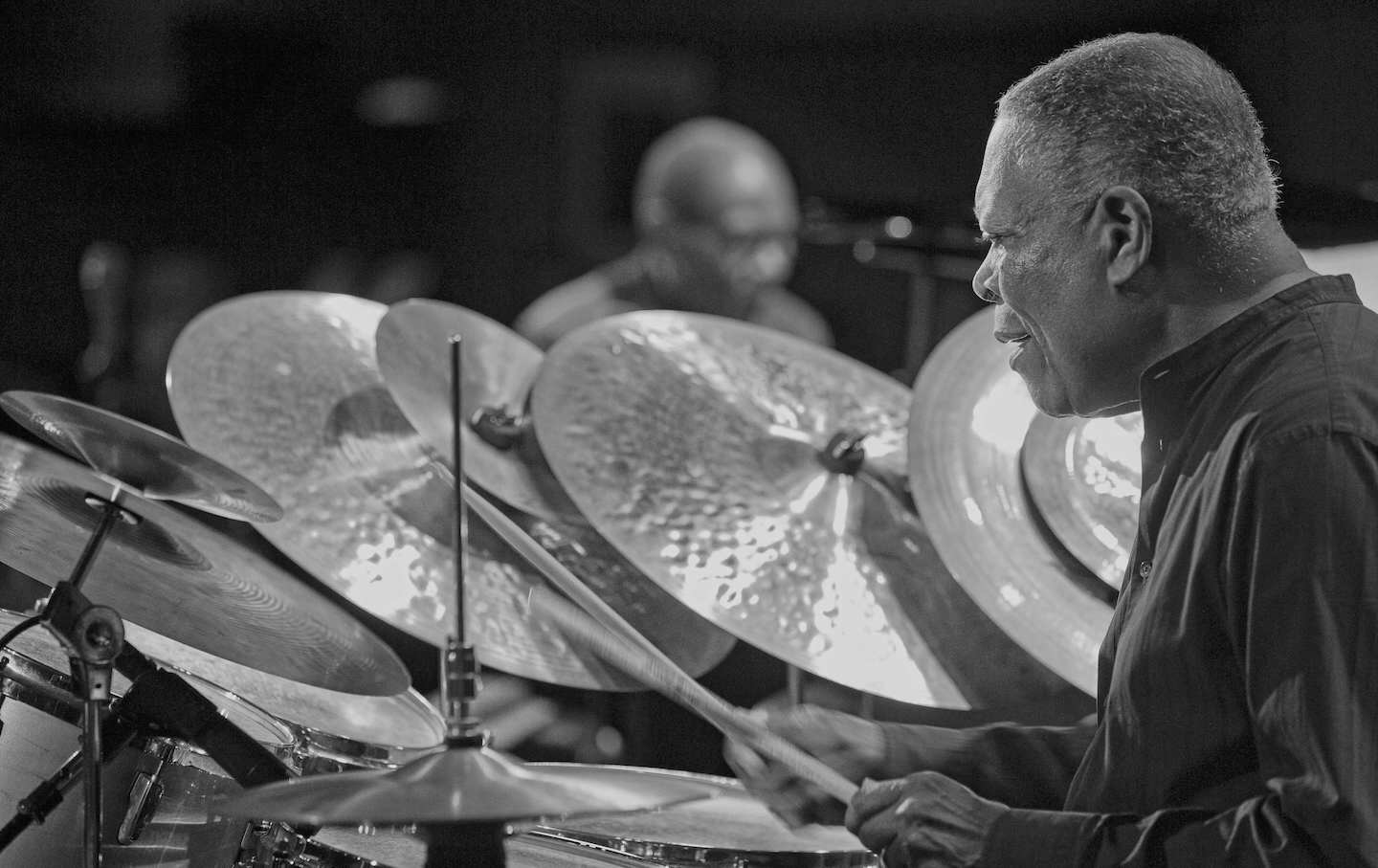
The legendary jazz drummer played with Herbie Hancock, Miles Davis, and Stan Getz. His new memoir tells all—and lays out his own philosophy.
Billy Hart
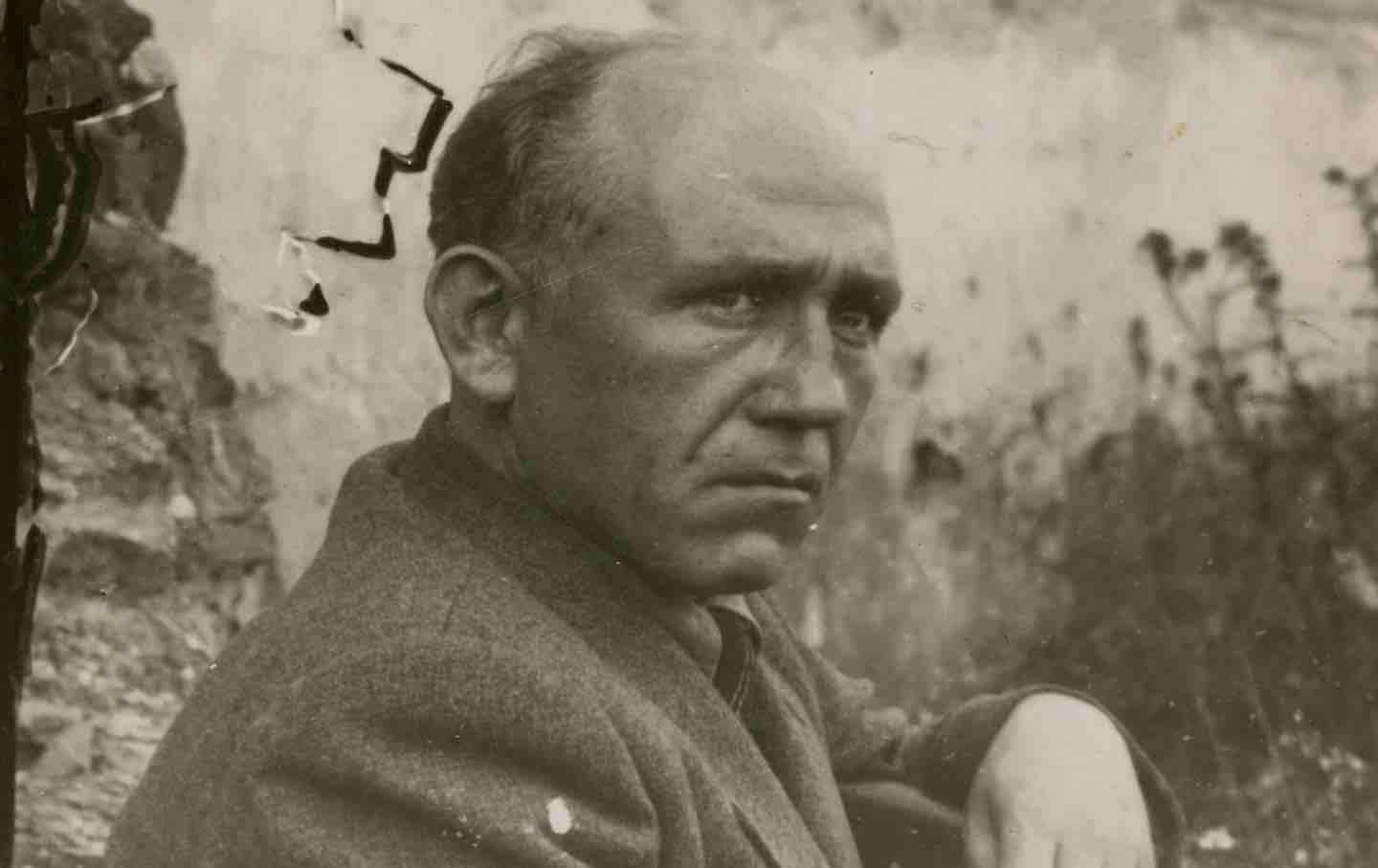
The Yiddish writer’s lost masterpiece, Sons and Daughters, brought back to life, in all its humor and beauty, the Jewish shtetl of his youth.
Lily Meyer
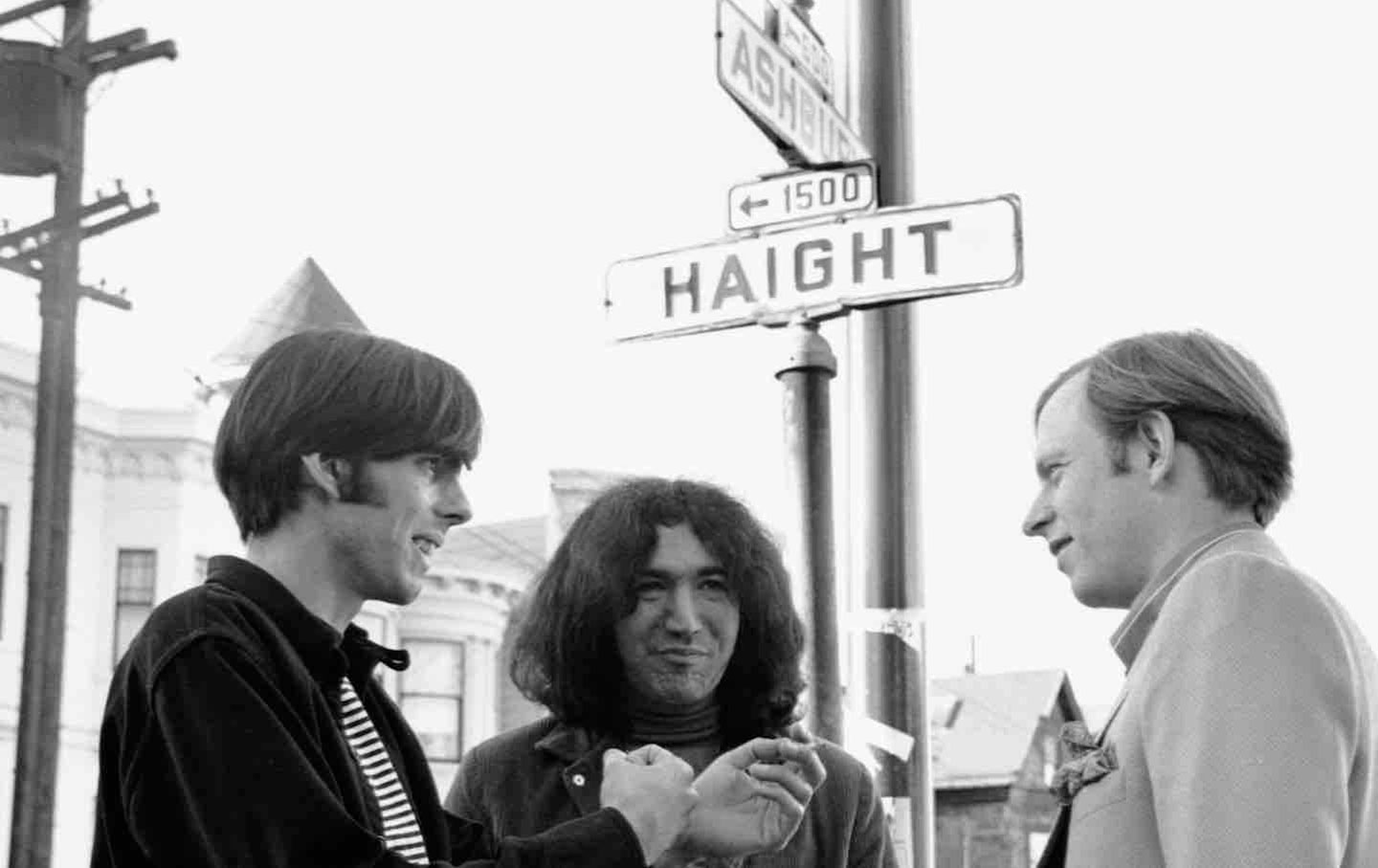
In The Electric Kool-Aid Acid Test, the journalist broke free of his contrarian clichés to illuminate the origins of 1960s counterculture.
Nick Burns
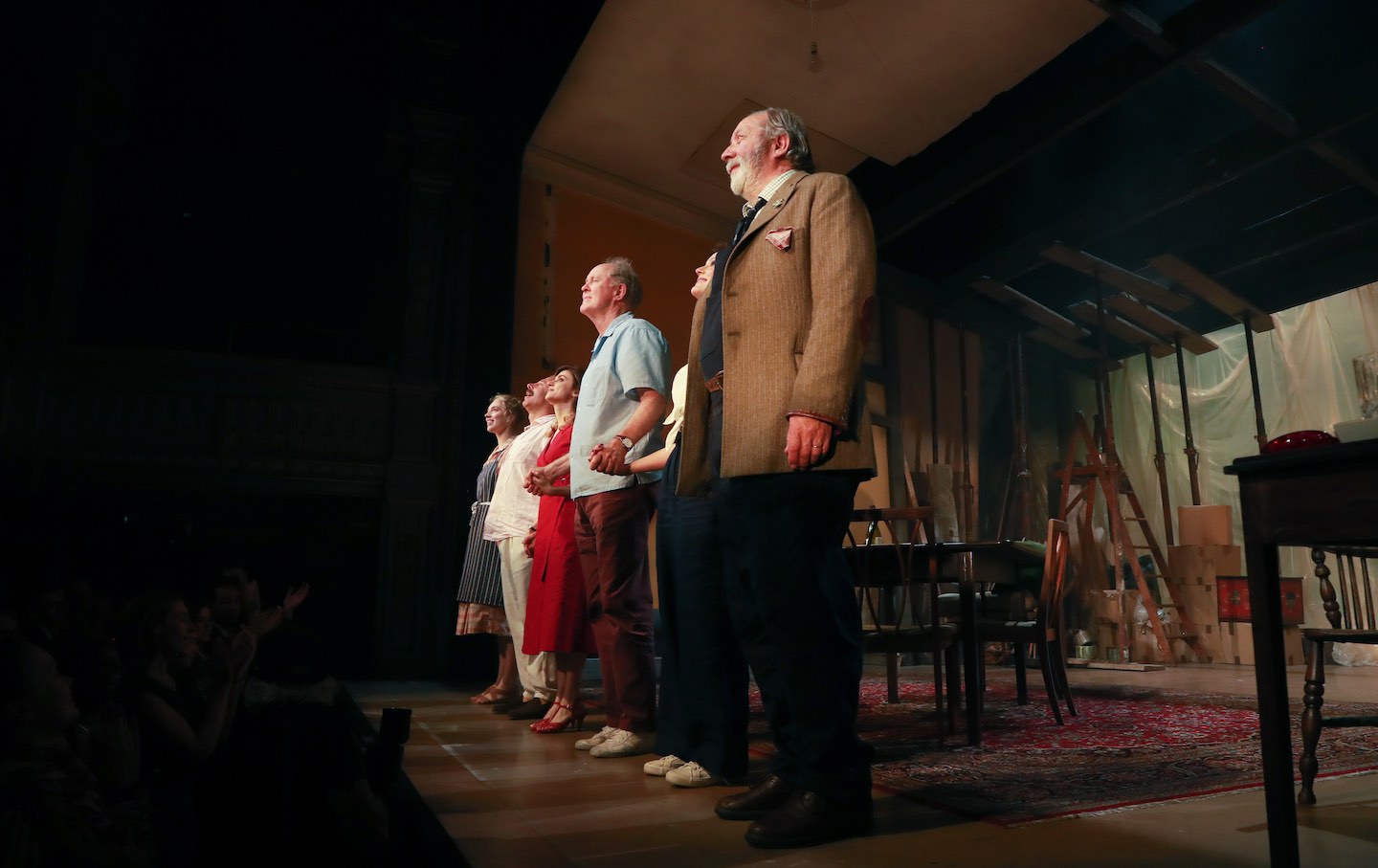
A new play about Roald Dahl shows the now-controversial children’s writer in his flawed, complicated reality.
Katha Pollitt
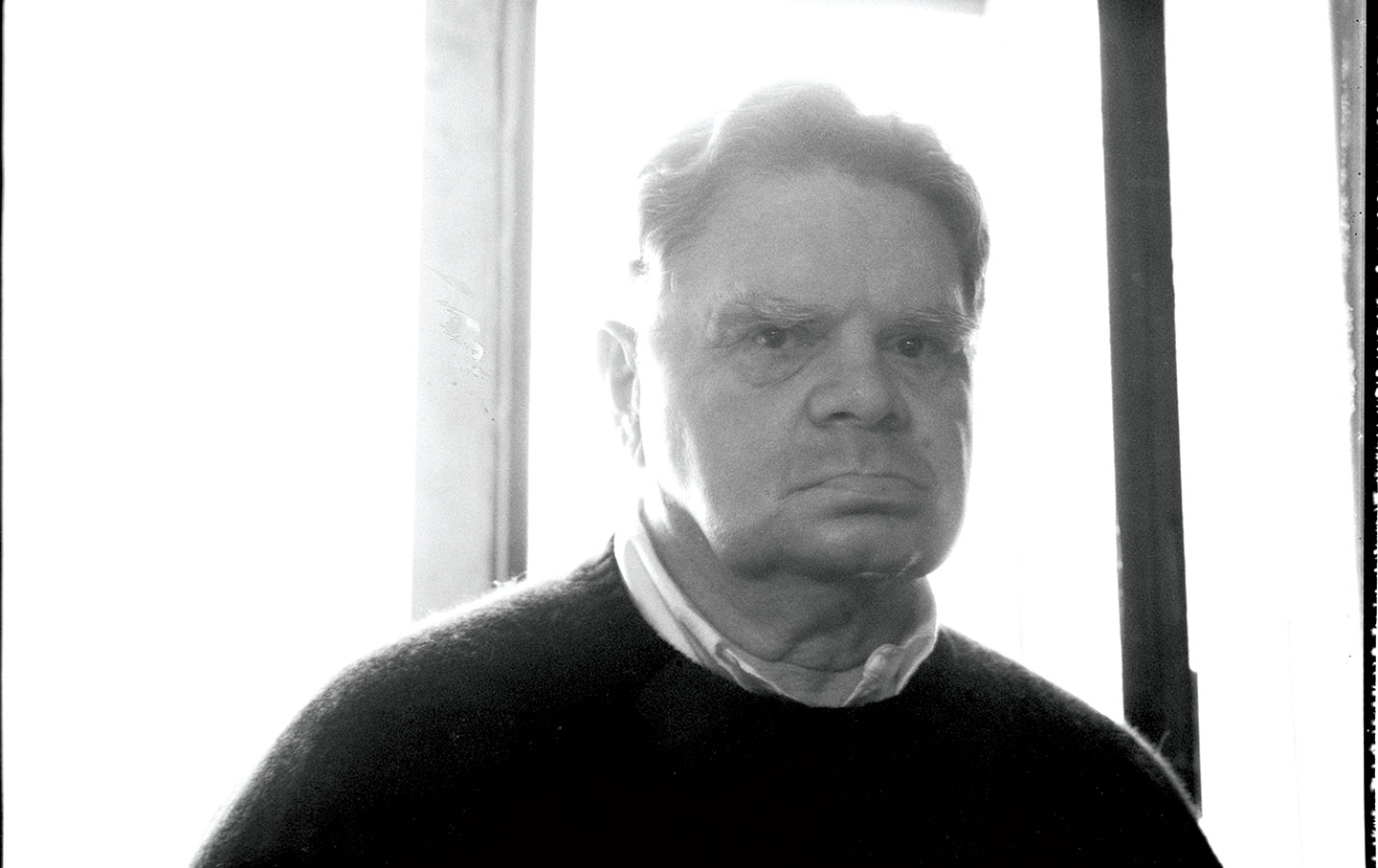
Nathan Kernan’s biography of the New York School poet tracks the development of his serene and joyful work alongside the chaos of his life.
Books & the Arts
/
Evan Kindley









